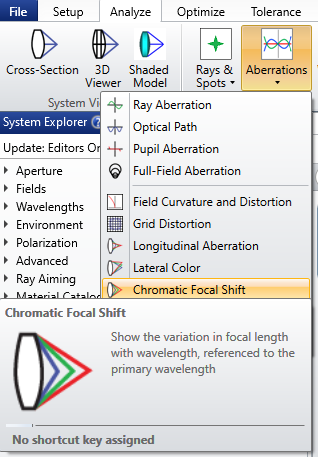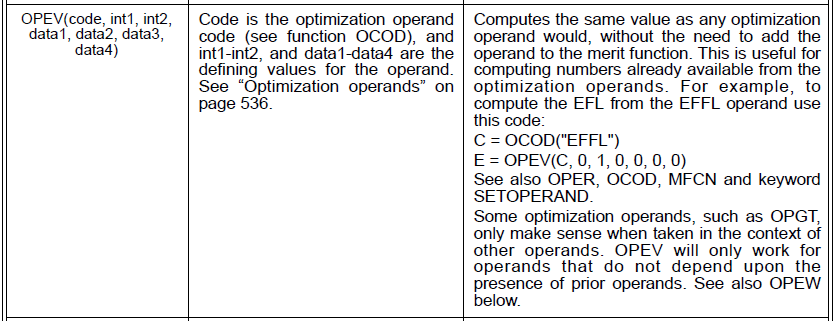Hi,
I would like to calculate the chromatic focal shift using ZEMAX macro. I know it is related with the back focal length and different wavelengths. However, I did not find such numerical functions or operands to do raytracing and get the back focal length.
Could anyone give any hint? Thank you.
Oliver





